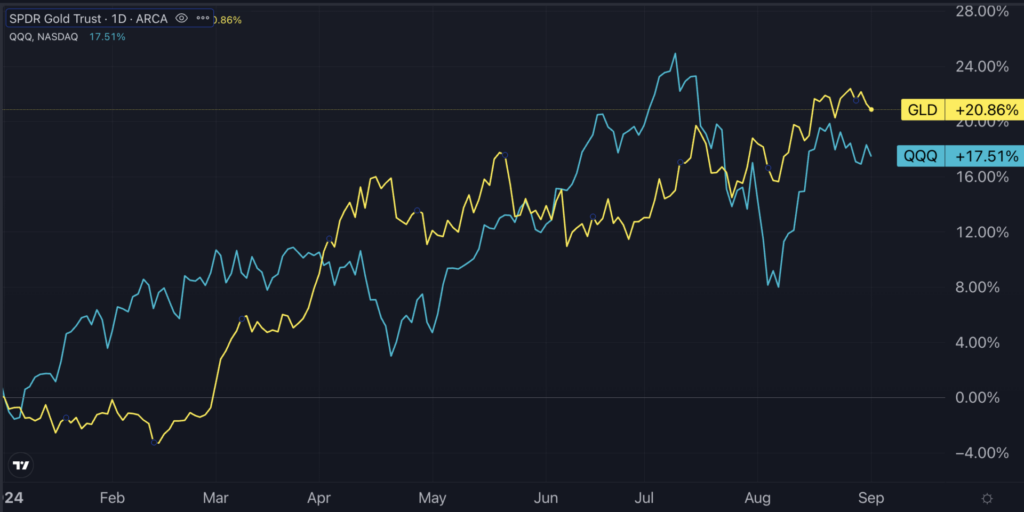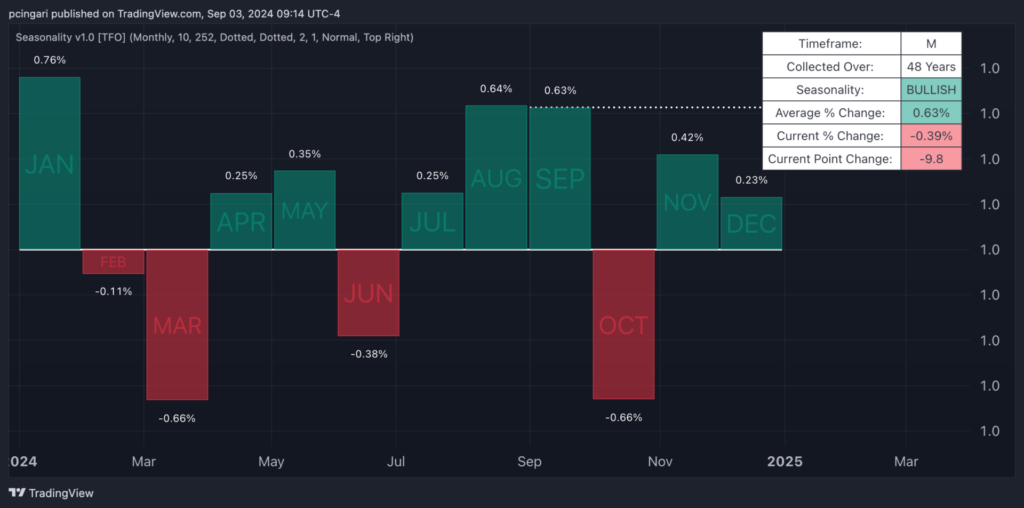Zinger Key Points
- Goldman Sachs projects gold will reach $2,700 per ounce by early 2025.
- Year-to-date, gold has surged 21%, outperforming the Nasdaq 100 index.
- Feel unsure about the market’s next move? Copy trade alerts from Matt Maley—a Wall Street veteran who consistently finds profits in volatile markets. Claim your 7-day free trial now.
Goldman Sachs projects a surge in gold prices to $2,700 per troy ounce by early 2025, driven by strong central bank demand and imminent Federal Reserve rate cuts.
The investment bank said in a Monday note that it continues to see gold as a prime asset in the near term, highlighting it as the “preferred hedge against geopolitical and financial risks.”
The yellow metal, as tracked by the SPDR Gold Trust GLD, has rallied 21% year-to-date, outperforming the Nasdaq 100 index, as tracked by the Invesco QQQ Trust, Series 1 QQQ.
Chart: Gold Outperforms Tech Stocks In 2024

3 Bullish Factors For Gold: Goldman Sachs
Goldman Sachs maintained its price target of $2,700 per troy ounce on gold and said it now expects the level to be reached by early 2025, slightly adjusted from the previous year-end 2024 target.
Analyst Samantha Dart also opened a long gold trading recommendation, with the confidence driven by the following key catalysts:
- Central Bank Demand: Central banks have been the primary drivers of increased gold demand since mid-2022. Dart said the “the tripling in central bank purchases since mid-2022 on fears about U.S. financial sanctions and U.S. sovereign debt is structural and will continue, reported or unreported.” This trend is expected to persist, potentially driving gold prices higher if new geopolitical or financial shocks emerge.
- Fed Rate Cuts: The anticipated rate cuts by the Federal Reserve are poised to attract Western capital back into the gold market, a factor largely absent from the sharp gold rally seen over the past two years. This influx of capital could further propel gold prices upward.
- Hedge Against Geopolitical Risks: Gold remains a valuable hedge against geopolitical shocks, including tariffs, Fed subordination risks and debt fears.
Goldman Sachs acknowledges the impact of the price-sensitive Chinese market, which has tempered the bank’s timeline for reaching the $2,700 target. While the recent price rally may have slowed demand from China, Goldman said this sensitivity will also “insure against hypothetical large price declines,” as lower prices would likely trigger renewed buying interest from Chinese investors.
Eyes On September Stock Volatility
September is usually a seasonally weak period for U.S. equities, according to the World Gold Council.
In this context, “gold's typically strong negative correlation during equity sell-offs should sustain investor interest,” especially given the elevated uncertainty and event risk, which are expected to keep gold attractive to investors, the council said.
Since 1950, the S&P 500 index, as tracked by the SPDR S&P 500 ETF Trust SPY, has generated an average return of negative 0.7% in September, finishing higher only 43% of the time.
The last four Septembers have been particularly difficult for the S&P 500, with significant declines of 4.9% in 2022, 9.3% in 2021, 4.8% in 2020 and 3.9% in 2019. This trend of poor performance may push investors toward gold as a safe-haven asset during this notoriously tough month for equities.
A seasonality analysis over the past 48 years reveals that September has historically been a favorable month for gold. The metal has posted an average gain of 0.63% in September, making it one of gold’s strongest months, trailing only August’s 0.64% increase and January’s 0.76% surge.
Chart: September Traditionally A Positive Month For Gold

Read Next:
Photo via Shutterstock.
Edge Rankings
Price Trend
© 2025 Benzinga.com. Benzinga does not provide investment advice. All rights reserved.
Trade confidently with insights and alerts from analyst ratings, free reports and breaking news that affects the stocks you care about.